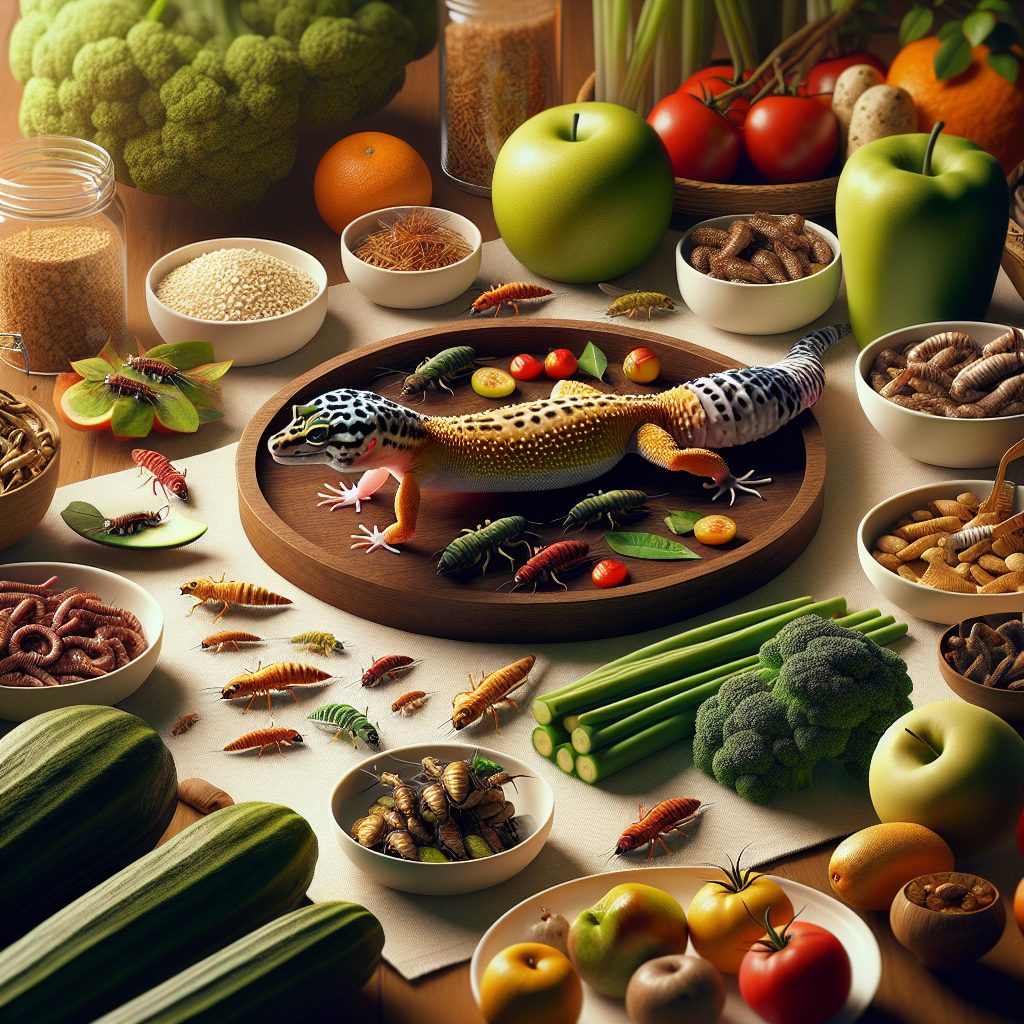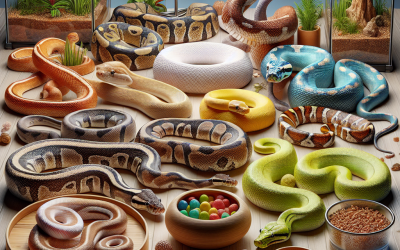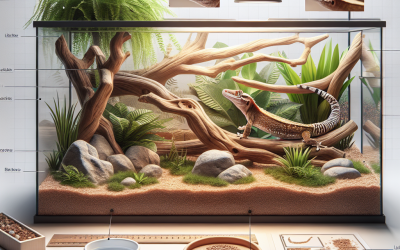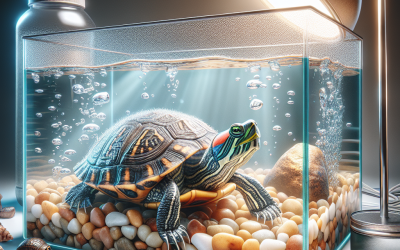Leopard Gecko Diet: What to Feed for a Healthy Life
Introduction
When it comes to keeping a leopard gecko as a pet, one of the most critical aspects of their care is understanding their unique dietary requirements. The leopard gecko diet is essential not just for their growth and vitality but also for their overall happiness and longevity. Did you know that proper nutrition can significantly impact a leopard gecko’s lifespan, potentially extending it to 20 years or more? This fascinating fact underscores the importance of providing a balanced diet tailored specifically to these remarkable reptiles.
In this article, we will delve into the essentials of the leopard gecko diet, exploring what foods are appropriate, how often to feed them, and the significance of hydration. Recent studies have shed light on the nutritional needs of these reptiles, revealing that a well-rounded diet is integral to preventing health issues. We’ll provide a comprehensive guide on the best food choices and feeding schedules, ensuring your leopard gecko thrives.
By the end of this article, you’ll have a deep understanding of how to craft a diet that meets the needs of your pet. This information is vital for both novice and experienced gecko owners, as it empowers you to make informed decisions about your pet’s health. Ready to dive in? Let’s explore the intricacies of the leopard gecko diet and ensure your gecko enjoys a healthy, fulfilling life!
For more insights on keeping reptiles healthy, check out our guide on essential tips for exotic pet care.
What is Leopard Gecko Diet?
Defining the Leopard Gecko Diet
The leopard gecko diet primarily consists of insects and other protein-rich foods. In the wild, these nocturnal creatures hunt various insects, including crickets, mealworms, and waxworms. As a pet owner, replicating this natural diet is crucial for their health and well-being.
Historical Context
Historically, leopard geckos have been kept as pets since the 1980s. As their popularity soared, so did the research into their dietary needs. Initially, many owners fed them a limited range of foods, often leading to nutritional deficiencies. Over time, experts in reptile care began to advocate for a diverse diet, emphasizing the importance of variety and balance.
The Importance of Leopard Gecko Diet
A proper leopard gecko diet is vital for several reasons:
- Growth and Development: Young geckos need a diet rich in protein to support their rapid growth.
- Reproductive Health: Female geckos require specific nutrients to lay healthy eggs.
- Disease Prevention: A well-rounded diet can help prevent metabolic bone disease and other health issues.
Leopard Gecko Diet in the Context of Reptile Care
Understanding the leopard gecko diet is part of a broader conversation about reptile care. Just like other reptiles, leopard geckos require specific nutrients—like calcium and vitamins—to thrive. A balanced diet not only meets their nutritional needs but also enhances their immune system, making them less susceptible to illnesses.
Key Players or Contributors
Numerous studies and experts have contributed to our understanding of reptile nutrition. Research by herpetologists has focused on the dietary habits of leopard geckos in the wild, informing pet care practices and feeding recommendations.
For a deeper dive into common health issues in exotic pets and their prevention, visit our page on common health issues in exotic pets.

How Does Leopard Gecko Diet Work?
The Mechanics of Leopard Gecko Diet
The leopard gecko diet works through a combination of physiological processes that allow them to digest and absorb nutrients effectively. Understanding these mechanisms can help you optimize your pet’s diet for better health outcomes.
Digestive Process of Leopard Geckos
Leopard geckos have a relatively simple digestive system. After consuming food, it passes through their stomach and into the intestines, where nutrients are absorbed. Here’s how it works:
- Ingestion: When a gecko eats, it uses its tongue to capture prey.
- Digestion: The food is broken down in the stomach with the help of digestive enzymes.
- Nutrient Absorption: Nutrients are absorbed in the intestines, where essential vitamins and minerals enter the bloodstream.
- Excretion: Waste is expelled, completing the digestive cycle.
What Foods Should You Include in the Leopard Gecko Diet?
In crafting an effective leopard gecko diet, variety is crucial. Here are some recommended food options:
- Insects: Crickets, mealworms, waxworms, and roaches are excellent protein sources.
- Fruits and Vegetables: While leopard geckos primarily eat insects, small amounts of fruits and veggies can provide vitamins. Consider offering mashed bananas or grated carrots occasionally.
- Commercial Diets: Some companies offer specialized leopard gecko food that contains balanced nutrients, which can be a convenient option.
Feeding Schedule
Establishing a proper feeding schedule is essential for your leopard gecko’s health. Here’s a general guideline:
- Juvenile Geckos (up to 6 months): Feed daily, offering as many insects as they can consume in 15 minutes.
- Adult Geckos (6 months and older): Feed every other day, adjusting the quantity based on their size and weight.
The Role of Hydration
Hydration is often overlooked but is just as important as nutrition. Leopard geckos can become dehydrated quickly if they don’t have access to clean water. Ensure your gecko has a shallow water dish in their enclosure, and consider misting their habitat lightly to maintain humidity levels.
For additional information on how to keep your exotic pet mentally stimulated, check out our article on exotic pet enrichment.
Signs of a Healthy Leopard Gecko Diet
Healthy Appearance
A well-fed leopard gecko should have a healthy appearance, which includes:
- Bright Eyes: Clear and alert eyes indicate good hydration and nutrition.
- Plump Tail: A fat tail is a sign of good health, as geckos store fat reserves there.
- Active Behavior: An active gecko is typically healthier and more engaged with its surroundings.
Monitoring Food Intake
Keep an eye on how much your leopard gecko eats. If you notice a sudden change in appetite—whether increased or decreased—it can indicate health issues. Regularly assess their weight and make adjustments to their diet as necessary.
Common Dietary Issues
Some dietary issues you might encounter include:
- Obesity: Overfeeding can lead to obesity, which can cause various health problems.
- Metabolic Bone Disease (MBD): A lack of calcium and vitamin D3 can lead to MBD, resulting in weak bones. Ensure a proper balance of nutrients to prevent this.
For more insights on exotic pet care and to learn about crucial tips, you can visit our page on complete guide to small mammal pet care.
Tips for Feeding Leopard Geckos
Use Supplements Wisely
To ensure your leopard gecko receives all necessary nutrients, use supplements judiciously. Calcium powder and vitamin D3 are essential, especially for breeding females. Dust insects with these supplements before feeding.
Variety is Key
Feeding a variety of insects prevents boredom and ensures a well-rounded diet. Rotate different types of insects throughout the week to keep your gecko interested and healthy.
Observe and Adapt
Every leopard gecko is unique. Pay attention to your gecko’s preferences and adjust their diet accordingly. Some may prefer certain insects over others, and that’s perfectly normal.
Conclusion
The leopard gecko diet is a fundamental aspect of keeping these fascinating reptiles healthy and happy. By understanding their dietary needs—what to feed, how often to feed, and the importance of hydration—you can ensure your gecko thrives. Remember, a balanced diet rich in variety, along with proper supplements, is key to preventing common health issues and promoting a long, healthy life.
In summary, prioritize your leopard gecko’s diet by focusing on:
- Quality Insects: Choose high-quality insects to provide essential proteins.
- Hydration: Ensure fresh water is always available.
- Vitamins and Minerals: Use supplements wisely to avoid deficiencies.
With this knowledge at your fingertips, you’re well-equipped to provide the best possible care for your leopard gecko. For even more resources on exotic pet care, don’t hesitate to explore our blog or contact us with any questions!
By utilizing the above guidelines, you’ll foster a thriving environment for your leopard gecko, ensuring they lead a healthy, vibrant life. Happy feeding!
Resource Links:
- reddit.com: … Your gecko should be getting fed a varied diet of insects. A good staple feeder is Dubia Roaches, they can’t fly, and don’t stink like crickets …
- community.morphmarket.com: … I personally feed my adults primarily hornworms, dubia, BSFL, and occasional silkworms and Leopa gel. I keep superworms, butter worms, and mealworms as backup …
- reddit.com: … I prefer to give them scraps from endive, kale, bok choy, turnip greens or mustard greens as their main diet with some fruit on the side, mostly …




0 Comments